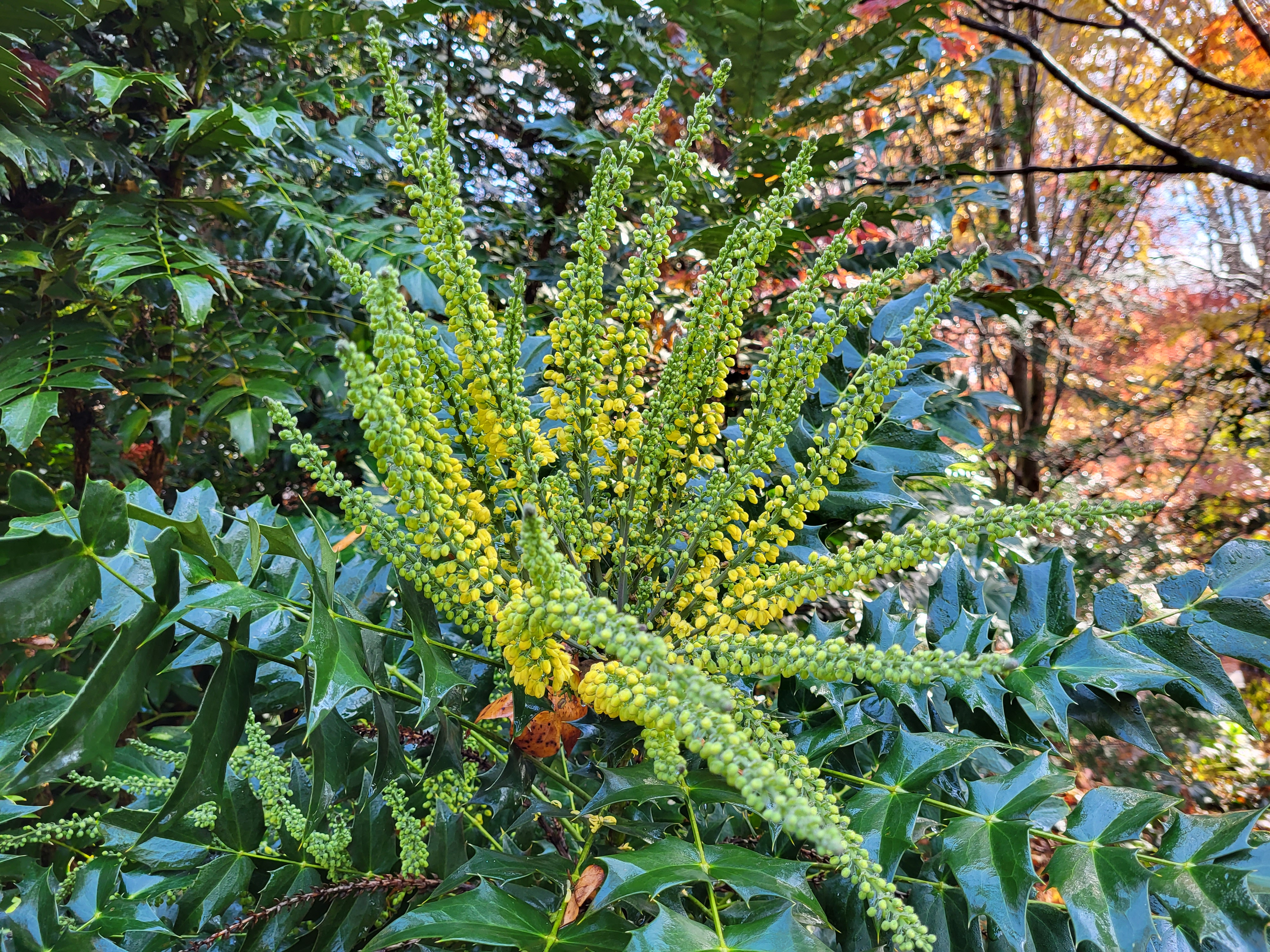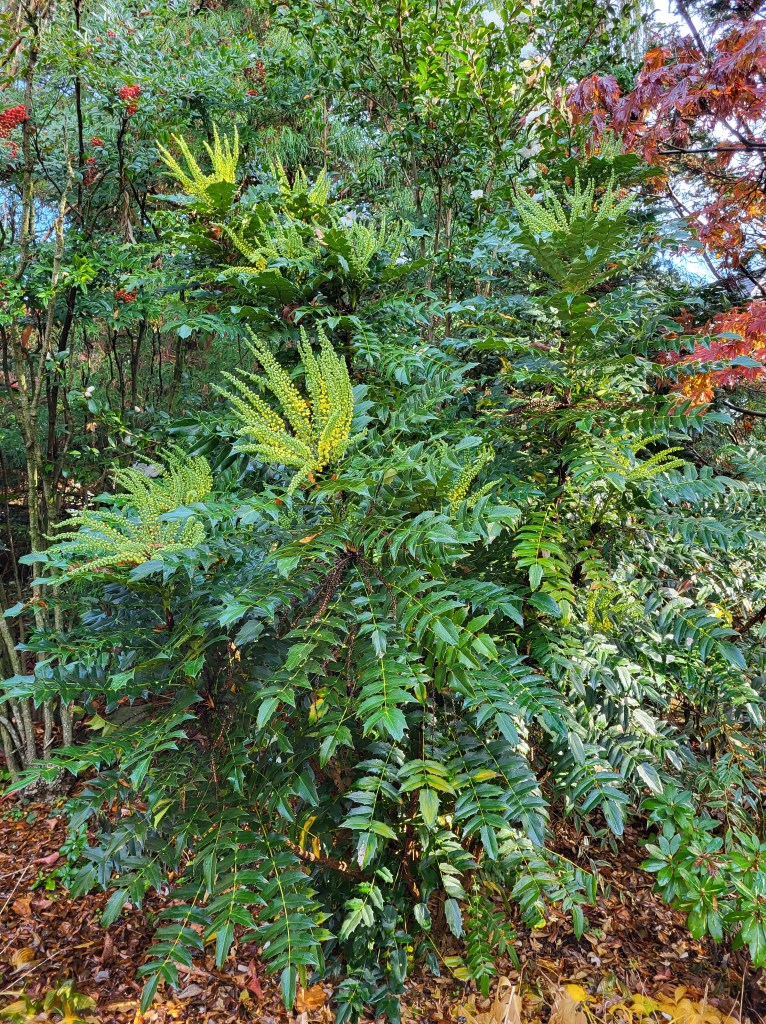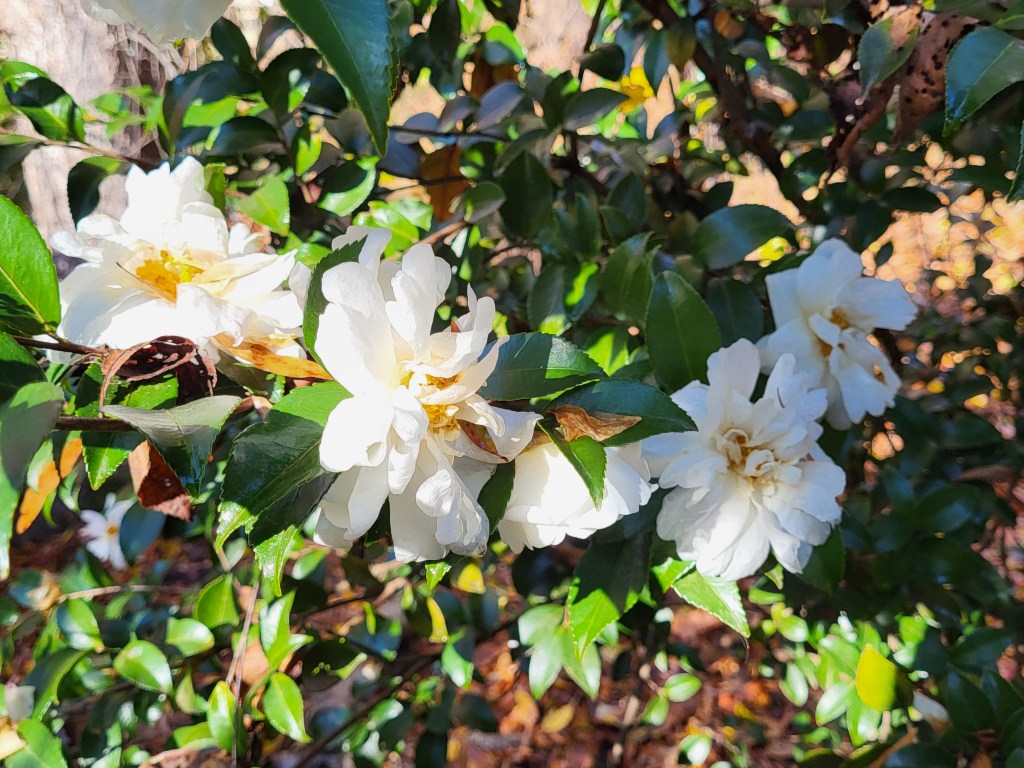While the late winter flowering leatherleaf mahonia (Mahonia bealei, now Berberis bealei) is known to seed around a bit, there is little opportunity for blooms of the autumn flowering mahonias to be pollinated with infrequent mild weather days suitable for bees to be out and about by mid-November. Leatherleafs are often loaded with grape-like fruits by spring, but fruits on ‘Winter Sun’ (Mahonia x media, now Berberis x hortensis ‘Winter Sun’, below) and other hybrids are rare in this garden.


The blooms of leatherleafs arrive just as other more favored, late winter flowers are peaking, but ‘Winter Sun’ , ‘Underway’, ‘Charity’, and ‘Marvel’ begin flowering in the garden in early November with blooms that often persist into January when there are few other flowers in the garden. The spikes of yellow flowers stand out while much of the garden is dormant, though I am years past the time that I recall which is which with the exception of the nearly spineless ‘Marvel’ (below). All others are similar in leaf, though I suspect there are height differences, which is why I planted a small collection.

In shade, flowering is late and significantly reduced, but in part and full sun, there will be many flowers on evergreen shrubs growing eight feet and taller. The oldest ‘Winter Sun’ mahonia in the garden has been cut in half a time or two with no ill consequences. While some mahonias have proved not to tolerate our northwest Virginia cold, the autumn flowering hybrids do not suffer in all but our coldest winter temperatures.

Early spring flowering camellias are marvelous, and if there is any benefit from mild winters the past decade, flower buds of camellias are rarely injured by severe cold. It is the autumn flowering hybrids (above and below), however, that are most favored in this garden. While flowers are damaged by temperatures falling into the lower twenties (Fahrenheit), there are often additional buds that open within days in milder weather.

Only one autumn flowering Camellia sansanqua (Camellia sasanqua ‘Royal Flush’) is planted in the garden, and at a relatively small size, its flowering has been disappointing. At the time when most of the camellias were planted twenty years ago, freezes nearing and falling below zero (Fahrenheit) were regular, and sasanquas are less cold tolerant than autumn flowering hybrids. While spring bloomers are congregated in the more shaded side garden, the hybrids flower heavily in part shade along the driveway.

Several common witch hazels (Hamamelis virginiana, above) flower from October into November, though each only for a few weeks. Flowering time seems greatly dependent on sunlight exposure, and while the first to bloom shed its leaves prior to flowering, most do not.
Vernal witch hazels and Asian hybrids flower in January and February when other flowers are fewer, and of course, after leaves have been shed. While the common witch hazel has no discernable fragrance and only yellow autumn foliage color, other witch hazels can be very fragrant with splendid autumn coloring. I continue to add more of all to the garden.
Are there any fragrant Witch Hazels that you would recommend?
Without a doubt, I am the worst person to ask. My sense of smell has always been severely lacking, but there are days in mid January when the scent of the vernal witch hazels wafts through the rear garden. I’m sure there are differences between the February flowering hybrids, but I smell no difference between Diane, Arnold Promise, or Jelena. All are fragrant, but without drawing my nose up close, there is fragrance from a distance only on still, mild afternoons.
Thanks!!